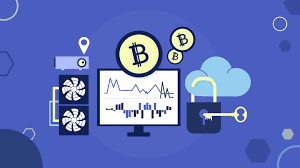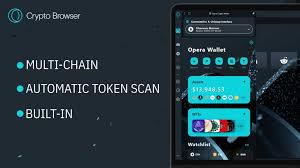Blockchain can be understood as a digital ledger that operates without a central authority, ensuring that records are securely maintained across a network of computers. This system is characterised by its transparency, resistance to alterations and immutability. Each unit of information, referred to as a block, is filled with data and connected sequentially to form what is known as a chain.
Essentially, blockchain serves as a distributed database or ledger that is accessible across various nodes within a computer network. While it has gained significant recognition for its foundational role in cryptocurrency transactions—providing an unalterable and decentralised record—it extends far beyond the realm of digital currency. In fact, blockchains can facilitate immutable data storage across numerous industries, ensuring that once information is recorded in the block, it cannot be modified. This characteristic means that trust is only necessary at the point where data entry occurs by either users or applications, thus minimising reliance on trusted third parties like auditors, who may introduce extra costs and potential errors.

Since Bitcoin’s debut in 2009, the applications of blockchain technology have proliferated dramatically. This surge has led to the emergence of various cryptocurrencies, decentralised finance (DeFi) platforms, non-fungible tokens (NFTs), and smart contracts.
In summary, blockchain represents a unique form of shared database distinct from conventional databases due to its method of information storage—data is organised into blocks that are cryptographically linked together. Although diverse types of information can inhabit this structure, transaction ledgers remain its most prevalent application. In the case of Bitcoin’s blockchain, it operates on a decentralised model where no single entity holds dominion; instead, control lies collectively with all users involved in the network. The decentralisation aspect ensures immutability; once transactions are recorded on Bitcoin’s blockchain, they become permanent and accessible for anyone to view.
Understanding the workings of a blockchain can be likened to grasping the concept of spreadsheets or databases. At its core, a blockchain operates as a database where data is recorded and preserved. However, what sets it apart from conventional databases or spreadsheets is its unique method of data organisation and retrieval. Within a blockchain, there are programs known as scripts that perform the same functions you would typically execute in a database—inputting and accessing data while ensuring it is securely stored.
How Blockchain Works
One of the defining features of a blockchain is its distributed nature; this means that numerous copies of the data exist across various machines, all of which must be identical for the information to be considered valid. Take Bitcoin’s blockchain as an example: it gathers transaction details and compiles them into a block, which has a capacity of 4MB (although different blockchains may have varying block sizes). When this block reaches its total capacity, the contained data undergoes processing through a cryptographic hash function. This process generates a hexadecimal value known as the block header hash.
This hash then becomes part of the subsequent block header and is encrypted alongside other details within that particular block’s header. This sequence effectively forms an interconnected series of blocks—hence the term blockchain.
The process of executing transactions varies based on the specific blockchain in use. Take Bitcoin as an example: when you initiate a transaction through your cryptocurrency wallet, the application that connects you to the blockchain triggers a series of events. Initially, your transaction is directed to a memory pool, where it waits in line until a miner selects it. Once it’s included in a block and that block reaches its capacity with transactions, it is sealed off, and mining commences.
In this system, every node within the network independently proposes its blocks by selecting different transactions. Each miner tackles their own set of blocks, competing to solve a complex target difficulty using what’s known as the nonce, which stands for the number used once. The nonce is a modifiable field within the block header whose value increases incrementally with each mining attempt. If the generated hash does not meet or fall below the predetermined target hash, one is added to the nonce, leading to another hash generation process—and this cycle continues.
Notably, after roughly 4.5 billion attempts—an endeavour that takes less than one second—the nonce resets and utilises an additional counter called the extra nonce for further attempts. This relentless effort continues until a miner successfully produces a valid hash, thereby winning the competition and earning their reward. This exhaustive search for hashes until hitting upon an acceptable value constitutes what is commonly referred to as proof-of-work, signifying that the miner has expended substantial effort. The immense computational power and energy required for this validation process contribute significantly to Bitcoin’s high energy consumption.

Once a block has been finalised, it signifies that your transaction has been completed; however, it remains unconfirmed until five subsequent blocks are validated—a process that typically takes about an hour since each block averages just under ten minutes (the initial block containing your transaction plus five more at ten minutes each adds up to sixty minutes). It’s important to note that not all blockchains operate under this model; for instance, Ethereum employs a different mechanism by randomly selecting one validator from among users who have staked ether to confirm blocks efficiently—a method that proves much quicker and less energy-intensive compared to Bitcoin’s approach.
Decentralisation in Blockchain
A blockchain operates by distributing data across multiple network nodes, which are computers or devices running the blockchain software from various locations. This distribution ensures redundancy and preserves the integrity of the information. For instance, if an attempt is made to modify a record on one node, other nodes can thwart this effort by cross-referencing block hashes. Consequently, no individual node has the power to change any data within the chain. Thanks to this decentralised structure and the encrypted proof of work performed on the blockchain, data such as transaction histories becomes immutable. While these records may typically include transaction lists, private blockchains can also accommodate a wide range of other information, including legal agreements, state IDs, or company inventories. Rather than directly storing these items on-chain, they are usually processed through a hashing algorithm and represented as tokens.

Transparency in Blockchain
The Bitcoin blockchain exemplifies transparency due to its decentralised design; all transactions can be openly accessed by downloading and examining them or through blockchain explorers that provide real-time visibility into ongoing transactions. Each node maintains its copy of the chain that updates with each newly confirmed block added. This allows for tracking bitcoins as they move from one place to another. For instance, there have been instances where exchanges were hacked, leading to significant losses of cryptocurrency. Although hackers often remain anonymous aside from their wallet addresses, the stolen crypto can still be traced easily because these addresses are recorded on the blockchain. It’s important to note that while records in Bitcoin’s blockchain—and most others—are encrypted for security reasons, only individuals associated with specific addresses can disclose their identities. Thus, users of blockchain technology can enjoy a level of anonymity while ensuring transparency within the system.
Is Blockchain Really Secure?
The security and trust inherent in blockchain technology stem from its decentralised nature and several vital mechanisms. First and foremost, new blocks are consistently added in a linear and chronological order, meaning they are always appended to the end of the blockchain. Once a block is affixed at the end, it becomes immutable; previous blocks cannot be modified. Any alteration in the data results in a change to that block’s hash. Since each block includes the hash of its predecessor, changing one block would consequently affect all subsequent ones. Typically, the network would reject any tampered block due to mismatched hashes. However, smaller blockchain networks can be vulnerable to such modifications. It’s important to note that not every blockchain is entirely secure; they are essentially distributed ledgers that rely on coding for their recognised security levels. If there are flaws within this code, they can potentially be exploited by malicious actors.
For instance, a new or smaller chain could fall victim to attacks requiring control of at least half of the network’s computational power—a scenario known as a 51% attack. In contrast, achieving this on more extensive networks like Bitcoin is nearly impossible due to their scale and hashing speed; as of September 2024, Bitcoin operates at an astonishing rate of around 640 exahashes per second (that’s 18 zeros!). Similarly, Ethereum presents significant challenges for attackers who would need control over more than half of its staked ether—over 33.8 million ETH has been staked by more than one million validators as of September 2024. For an attacker or group attempting to manipulate this system, they would need ownership of over 17 million ETH and also require random selection for validating blocks enough times for their changes to take effect.

The concept of blockchain was first introduced in 1991 by researchers Stuart Haber and W. Scott Stornetta, who envisioned a method for ensuring document timestamps remained unalterable. However, it wasn’t until nearly twenty years later, with the advent of Bitcoin in January 2009, that blockchain found its first practical application in a real-world Blockchain platform.
Bitcoin operates on a foundational technology known as blockchain. In the paper that first introduced this digital currency, its pseudonymous inventor, Satoshi Nakamoto, described it as an innovative electronic cash system that facilitates direct transactions between individuals without the need for a trusted intermediary. The essential concept here is that Bitcoin leverages blockchain to maintain a transparent and immutable record of payments and other exchanges between users.
Blockchain itself serves as a versatile tool capable of permanently documenting a wide array of data types. This can encompass everything from financial transactions and election votes to inventory records, identification documents, property deeds, and much more. Presently, countless initiatives are exploring various applications of blockchain technology beyond mere transaction recording—one notable example being its potential role in secure voting processes during democratic elections. The inherent immutability of blockchain could significantly reduce the likelihood of fraudulent activities in voting systems. Imagine a scenario where citizens are assigned a unique cryptocurrency or token for voting purposes; each candidate would have their own designated wallet address where voters could send their tokens to express support. This transparent and traceable mechanism would eliminate the reliance on manual vote counting while mitigating risks associated with ballot tampering.
In contrast to traditional banking institutions, blockchains are seen as revolutionary within the financial landscape—particularly regarding payment processing and banking services. However, it’s crucial to recognise the fundamental differences between banks and decentralised blockchains. To illustrate these distinctions more clearly, we can examine how Bitcoin’s implementation of blockchain diverges from conventional banking practices.
Blockchain applications
Blockchains are proving to be versatile tools beyond their initial use in cryptocurrencies like Bitcoin, where they primarily record transaction data. Today, a multitude of cryptocurrencies operate on various blockchains, but the potential of this technology extends far beyond monetary transactions. Major companies such as Walmart, Pfizer, AIG, Siemens, and Unilever are exploring blockchain’s capabilities for diverse applications. A notable example is IBM’s Food Trust blockchain initiative, designed to monitor the journey of food products from their source to their final destination. This innovation addresses significant challenges in the food industry that have historically led to outbreaks of E. coli, salmonella, and listeria—issues often exacerbated by contamination during processing or transportation.
Traditionally, identifying the source of these outbreaks could take weeks; however, with blockchain technology in place, brands can trace a food item’s entire path and see every point it interacted with along the way. This enhanced visibility enables quicker identification of potential hazards and could potentially save lives by addressing issues before they escalate.

This application represents just one facet of how blockchain is being utilised today; its implementations are vast and varied across different sectors. One industry that stands to gain immensely from adopting blockchain technology is personal banking. Currently, banking operations are confined to business hours—typically five days a week—which means that deposits made late on a Friday may not be processed until Monday morning at the earliest. Even during regular hours, transactions can take one to three days for verification due to high volumes.
In contrast, blockchain operates continuously without downtime. By incorporating this technology into banking systems, customers might experience transaction processing times reduced to mere minutes or seconds—the time it takes for a new block to be added—regardless of weekends or holidays. Additionally, banks could benefit from expedited and secure inter-institutional fund transfers; given the large amounts involved in these transactions, even short delays can incur substantial costs and risks.
Moreover, for stock traders who currently face settlement periods extending up to three days (or longer with international trades), blockchain promises a revolutionary reduction in this timeframe by streamlining clearing processes significantly. The implications of these advancements suggest not only increased efficiency but also enhanced security within financial transactions across multiple platforms.
The foundation of cryptocurrencies, such as Bitcoin, lies in Currency Blockchain technology. This innovative framework simplifies international transactions by circumventing traditional currency limitations, instabilities, and infrastructural gaps. It achieves this through a decentralised network that connects anyone with internet access.
In the healthcare sector, blockchain presents an opportunity for medical professionals to manage patient records securely. Once a medical record is created and authenticated, it can be recorded on the blockchain. This not only assures patients that their information remains unaltered but also provides them with verifiable proof of its integrity. Moreover, these health records can be encrypted and stored using a private key, granting access solely to authorised individuals and thereby safeguarding patient privacy.
When it comes to property rights, many are familiar with the cumbersome processes involved at local Recorder’s Offices. Traditionally, property deeds must be physically submitted to government officials, who then manually input the data into a central database and public index. In disputes over property ownership, resolving claims requires cross-referencing this public index—a process fraught with inefficiencies and human error that complicates ownership tracking. However, blockchain technology has the potential to revolutionise this system by eliminating the need for physical document scanning and file retrieval from local offices. By storing verified property ownership on the blockchain, owners can have confidence in the accuracy and permanence of their deeds.
Establishing property ownership can be nearly impossible in regions plagued by conflict or lacking governmental or financial infrastructure. Blockchain offers a solution. Communities in such areas could use this technology to maintain transparent records of property ownership over time.
Additionally, smart contracts represent another significant advancement enabled by blockchain technology. These are lines of computer code embedded within the blockchain designed to facilitate transactions based on predefined conditions agreed upon by users. Once those conditions are fulfilled, smart contracts autonomously execute transactions for all parties involved.
Supply Chains
In the context of supply chains, as illustrated by the IBM Food Trust initiative, suppliers can utilise blockchain technology to document the origins of their purchased materials. This capability enables companies to authenticate not just their products but also widely recognised labels like Organic, Local, and Fair Trade. According to Forbes, there is a growing trend within the food sector to leverage blockchain for tracking food safety and its journey from farms to consumers.
Voting
As previously highlighted, blockchain has the potential to modernise voting systems. Implementing blockchain in elections could significantly reduce fraud and encourage higher voter participation, as demonstrated during West Virginia’s midterm elections in November 2018. This technology would safeguard votes against tampering and enhance transparency in the electoral process. It would streamline election operations by minimising staffing needs and delivering almost instantaneous results, thereby negating concerns about recounts or electoral fraud.
Pros and Cons of Blockchain
Despite its intricacies, blockchain offers vast possibilities as a decentralised record-keeping system. The technology promises enhanced user privacy, increased security, reduced processing costs, and fewer mistakes—potentially extending its applications well beyond those mentioned earlier. However, there are notable drawbacks as well.
Advantages:
– Enhanced accuracy through minimised human involvement in verification processes.
– Cost savings achieved by cutting out third-party validation.
– Decentralization enhances resistance against tampering.
– Transactions are secure, confidential, and efficient.
– Provides a transparent framework for transactions.
– Offers banking alternatives for individuals in unstable or underdeveloped nations.

Disadvantages:
– High technological costs associated with certain blockchain implementations.
– Limited transaction throughput per second.
– A history linked with illicit activities on platforms like the dark web.
– Regulatory frameworks differ across regions and remain ambiguous.
– Constraints related to data storage capacity.
Benefits of Blockchains
Accuracy of Transactions
Transactions within a blockchain network receive validation from thousands of devices globally. This structure minimises human involvement in verification tasks—thereby reducing errors—and ensures an accurate record is maintained. If an error were introduced by one computer on the network, it would only affect that single instance; other copies of the blockchain would reject it due to consensus rules.
Cost Efficiency
Traditionally, consumers incur fees when banks verify transactions or notaries authenticate documents. Blockchain eliminates these third-party intermediaries and their associated costs. For instance, business owners typically face fees when accepting credit card payments due to processing charges levied by banks or payment processors; however, Bitcoin operates without a central authority, leading to minimal transaction fees instead.
In the realm of decentralisation, blockchain technology distinguishes itself by eschewing a centralised repository for its data. Instead, it distributes copies of the blockchain across a network of interconnected computers. Each time a new block is introduced, all computers in the network promptly update their respective versions of the blockchain to reflect this addition. This method of dispersing information across multiple nodes enhances security and makes tampering considerably more challenging compared to traditional centralised databases.
When it comes to transaction efficiency, relying on central authorities can lead to significant delays; for instance, depositing a check on a Friday evening might not result in available funds until Monday morning due to banking hours. In contrast, blockchain operates continuously—day and night, every day of the year—allowing transactions on specific platforms to be completed and secured within mere minutes. This rapid processing is especially beneficial for international transactions that often face delays linked to differing time zones and the need for all parties involved to confirm payment processing.

While many blockchain networks function as public ledgers accessible via the Internet, they maintain user privacy by concealing personal identifiers associated with transactions. It’s important to clarify that while platforms like Bitcoin are often thought of as entirely anonymous, they actually provide pseudonymity; each transaction is linked to an address that could potentially reveal user identity if additional information is disclosed.
Transaction security is paramount in blockchain systems. Once a transaction takes place, it undergoes verification by the network before being added to a block on the chain. Each block possesses its unique hash along with that of its predecessor, rendering any modifications impossible once confirmed by the network.
Transparency is another hallmark of many blockchains, which are typically open-source; this allows anyone interested to examine their underlying code. Such openness facilitates audits for cryptocurrencies like Bitcoin regarding their safety measures but also means there isn’t any singular authority governing how Bitcoin’s code evolves or who can propose changes. If enough users within the network endorse an upgrade or modification deemed beneficial, then adjustments can be made accordingly.
On the other hand, private or permissioned blockchains may operate under different principles concerning transparency based on their intended purpose or design specifications. Organisations might implement these types solely for internal tracking purposes while restricting access from outside parties who do not have permission. Conversely, regulatory requirements may emerge compelling publicly traded companies to ensure financial transparency through approved blockchain reporting systems. By integrating blockchain into business accounting practices and financial disclosures, companies could safeguard against manipulating financial statements to project inflated profitability figures.
Empowering the Unbanked One of the most significant aspects of blockchain technology and cryptocurrencies is their accessibility to everyone, irrespective of factors like ethnicity, gender, geographical location, or cultural background. The World Bank estimates that approximately 1.4 billion adults lack access to bank accounts or any reliable means to manage their finances. A large proportion of these individuals reside in developing nations where cash transactions dominate, and financial systems are still emerging. Many earn their livelihoods in cash and have no choice but to stash this money in concealed spots within their homes or elsewhere, which unfortunately makes them vulnerable to theft and violence. While traditional cash can be stolen relatively easily, cryptocurrencies present a more secure alternative for safeguarding assets.
However, blockchain technology does come with its own set of challenges. Although it has the potential to reduce transaction costs for users, it is not without expenses. Take Bitcoin as an example: its proof-of-work mechanism for transaction validation requires enormous computational resources. In fact, the energy consumption from the vast network of devices supporting Bitcoin exceeds that of an entire country like Pakistan on an annual basis. Fortunately, some solutions are emerging; bitcoin-mining operations are being established that harness solar energy or utilise surplus natural gas from fracking sites and wind farm energy.
Another area where blockchain falls short is speed and data efficiency—Bitcoin exemplifies these limitations well. Its proof-of-work system takes about ten minutes to append a new block on the blockchain, resulting in a mere seven transactions per second (TPS). In contrast, traditional payment networks like Visa can handle up to 65,000 TPS effortlessly. While other cryptocurrencies, such as Ethereum, may perform better than Bitcoin in this regard, they still face constraints due to the inherent complexities of blockchain technology.
Efforts have been underway for years to address these inefficiencies; numerous projects claim they can achieve tens of thousands of TPS on their platforms. Ethereum itself is undergoing a series of upgrades designed to enhance performance through techniques like data sampling and rollups. These advancements aim not only to increase user participation but also to mitigate congestion while lowering fees and speeding up transactions.

Additionally, many blockchains encounter limitations regarding data capacity since each block has a maximum size it can accommodate. This ongoing debate over block size remains one of the critical challenges facing scalability in blockchain technology moving forward.
The blockchain network, while providing a layer of confidentiality that safeguards users from hacking and maintains their privacy, simultaneously opens the door to unlawful trading and activities. A notable instance of this is the Silk Road, an illicit online marketplace for drugs and money laundering that operated on the dark web from February 2011 until its closure by the FBI in October 2013. This hidden segment of the internet enables individuals to engage in transactions involving illegal goods without detection, utilizing tools like the Tor Browser and making payments with Bitcoin or other cryptocurrencies. This scenario sharply contrasts with U.S. regulations mandating financial service providers to gather customer information upon account creation. These regulations require thorough identity verification to ensure that customers are not linked to any known or suspected terrorist organisations.
In 2023, it was reported that only 0.34% of all cryptocurrency transactions were tied to illicit activities. This duality presents both advantages and disadvantages: while it grants universal access to financial accounts, it also facilitates easier transactions for criminals. Many proponents argue that the positive applications of cryptocurrencies—such as providing banking services to those without access—far outweigh their negative implications, mainly since most illegal dealings still rely on untraceable cash.
Public sentiment towards blockchain technology and cryptocurrencies remains apprehensive. The dramatic failures of previously reputable cryptocurrency exchanges like Mt. Gox in 2014 and FTX in November 2022 have fueled ongoing scepticism, compounded by persistent crypto scams and general wariness towards emerging technologies promising transformative changes. As we approach 2024, a significant portion—44%—of Americans express their intent never to invest in cryptocurrencies.
In terms of regulation, there is a growing unease within the crypto community regarding government oversight of digital currencies. Various jurisdictions are tightening their grip on specific types of cryptocurrencies and virtual currencies; however, no regulations have yet emerged aimed at limiting blockchain’s broader uses or development—only focusing on particular products derived from this technology.
Another critical consideration surrounding blockchains is their storage requirements. While we currently manage vast amounts of data without issue, the increasing adoption of blockchain technology will demand more extensive storage solutions over time—especially for blockchains where nodes maintain complete copies of the entire chain. Presently, data storage remains centralised within extensive facilities; however, should industries globally shift towards blockchain integration across all sectors, its rapidly expanding size will necessitate more sophisticated storage techniques or compel participants to upgrade their systems continuously.
This transition could significantly escalate costs related not only to financial investment but also to physical space requirements needed for data housing—as evidenced by Bitcoin’s blockchain exceeding 600 gigabytes as of September 15th, 2024; this figure reflects only Bitcoin transaction records alone! Although this amount may seem modest compared to what large data centres manage today, an increasing number of blockchains will inevitably contribute to further demands on our existing digital infrastructure.

What is a blockchain, really? At its core, a blockchain functions as a communal database or ledger. It organises data into units called blocks, and every node in the network maintains a complete copy of this database. This setup enhances security because if someone attempts to alter or erase an entry in one version of the ledger, the majority of nodes will reject that change.
To understand blockchain in simpler terms, picture this: you enter some information into a document on your computer and use software that generates a unique string of characters. This process is known as hashing, and the resulting string is referred to as a hash. You then append this hash to another document before adding more information. Once again, you employ the software to create another hash for this new document. Each hash serves as a digital fingerprint for the previous document, forming an unchangeable sequence of encoded files; any attempt to modify them would necessitate altering their corresponding hashes. These documents are stored across various computers within the network, which constantly cross-reference their stored documents against generated hashes to validate them. If there’s no match with an existing hash, that particular document gets dismissed.
For those just starting with this concept, think of blockchain as a decentralised network where files are interconnected through programs that produce hashes—unique strings representing each file’s content. Every participant in this network consists of computers or devices that check these hashes against their own generated ones; successful matches lead to file retention, while mismatches result in rejection.
The significance of blockchain technology is proliferating due to its wide-ranging applications currently being explored and implemented—much thanks to Bitcoin and other cryptocurrencies that have popularised it globally among investors. Blockchain promises enhancements in business and governmental operations by making them more precise, efficient, secure, and cost-effective while minimising reliance on intermediaries. As we move deeper into the third decade since its inception, it’s not about whether traditional companies will adopt blockchain technology; instead, it’s about when they will do so.
Today marks an era filled with innovations like NFTs (non-fungible tokens) and asset tokenisation. Looking ahead, we might witness an integration of blockchains with tokens and artificial intelligence, shaping solutions for both businesses and consumers alike.

Maxthon
When considering the leading options for the best blockchain browser, Maxthon undoubtedly stands out. With over 25 million active users, it has established itself as a highly favoured choice due to its impressive features. This browser is open source and operates on a free-to-use model, prioritising user privacy and security. Maxthon takes it a step further by integrating ad-blockers, providing a fiat on-ramp, and including a built-in cryptocurrency wallet.
One of Maxthon’s most striking features is its integration of the Ethereum-based ERC-20 token Basic Attention Token (BAT). This digital currency fundamentally shifts how users interact with online advertisements.
By leveraging BAT, Maxthon allows users to earn rewards simply by engaging with curated ads tailored to their interests. In an age of ad fatigue, this innovative approach empowers users to take control of their attention and monetise it.

As individuals browse the web using Maxthon, they can accumulate BAT for their engagement. This not only enhances their browsing experience but also presents an opportunity to generate passive income in a user-friendly manner.
Moreover, the process is straightforward: users can opt-in to view ads and decide which campaigns resonate with them. With each interaction, they are rewarded—adding a layer of excitement to routine activities like checking emails or reading articles.
Maxthon’s support for Basic Attention Token (BAT) is not merely an additional feature; it signifies a profound shift in the way advertising operates within the digital landscape. This innovative integration opens up a gateway to a new paradigm that prioritises mutual benefits for both users and advertisers.
In this ecosystem, users are rewarded for their attention—that invaluable resource that advertisers have historically sought to capture. By engaging with content and viewing ads, users earn financial incentives. This model values individual attention, transforming passive viewers into active participants in the digital economy.
On the other side of the coin, businesses benefit from more effective audience targeting. With BAT, advertisers can better connect with potential customers who are genuinely interested in their products or services. This leads to not just increased engagement but also enhanced brand loyalty, as users become more invested in interactions that reward them directly.
Thus, Maxthon’s support for BAT creates an environment where advertising becomes an exchange rather than an imposition. Users enjoy genuine rewards while companies gain access to a more attentive and responsive audience. As this revolutionary approach unfolds, it could reshape the fundamental dynamics of online advertising for years to come. This balance between earning and engagement may very well define the future of browsing, setting Maxthon apart in an increasingly competitive landscape.
Moreover, users enjoy complete control over the types of advertisements they encounter without worrying about third-party data collection practices. Another significant advantage of the Maxthon blockchain browser is its integration with IPFS (InterPlanetary File System), which enables decentralised file storage directly within the platform. By utilising IPFS, Maxthon helps mitigate data centralisation by distributing file storage across a global network.
In summary, Maxthon not only serves as an excellent starting point for anyone venturing into blockchain but also empowers users through innovative features that enhance both privacy and income potential while fostering an ecosystem that benefits all parties involved.
